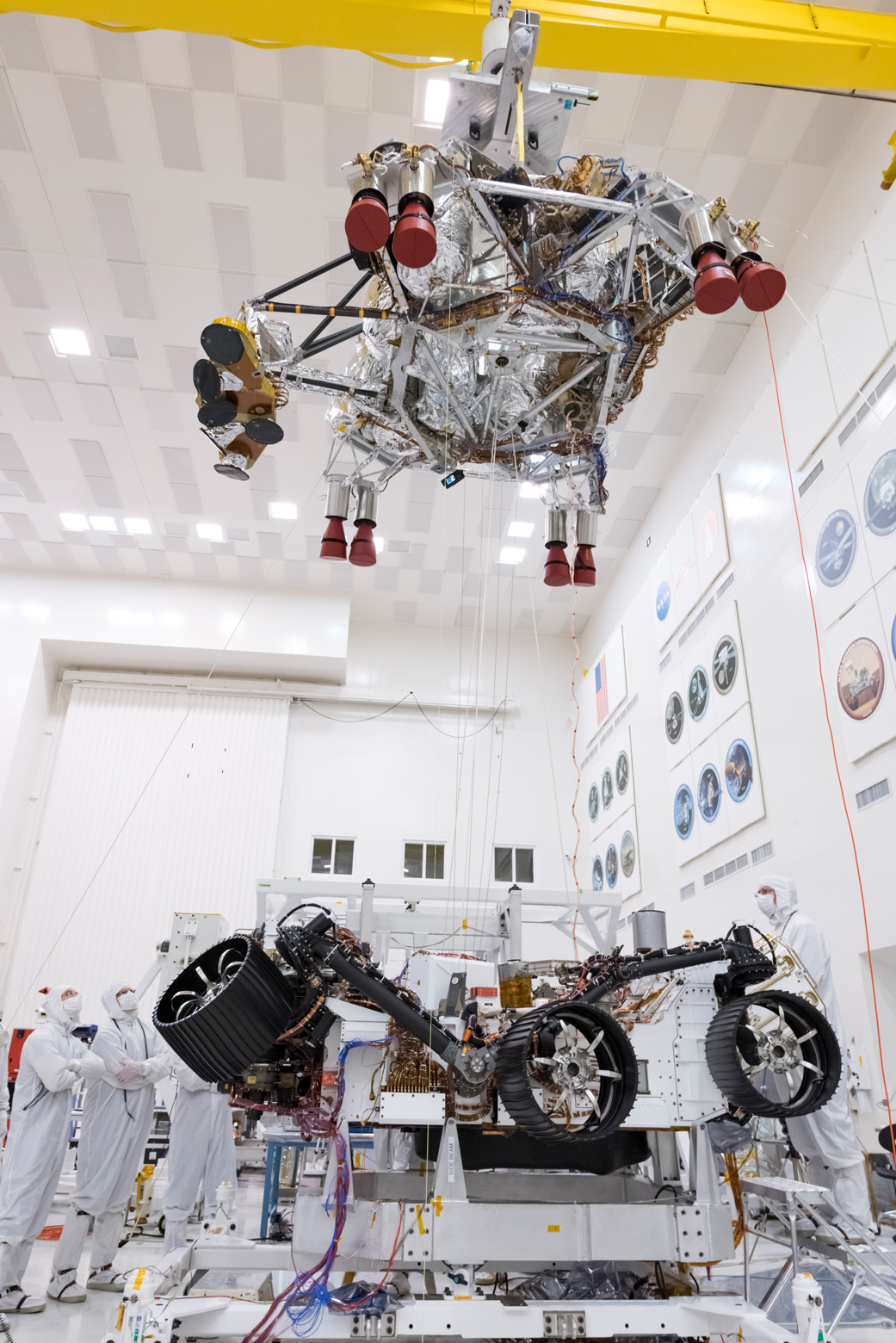NASA Tests Mars 2020 Rover's Sky Crane Landing Tech
Technicians used a crane to lift the rocket-powered descent stage away from the rover.

NASA's Mars 2020 rover mission has checked off another milestone with a successful separation test of the descent stage that will deliver the six-wheeled robot to the surface of the Red Planet.
The test, which took place at NASA's Jet Propulsion Laboratory (JPL) in Pasadena, California, on Sept. 28, involved using a crane to lift the large, rocket-powered descent stage away from the rover.
"Firing the pyrotechnic devices that held the rover and descent stage together and then doing the post-test inspection of the two vehicles was an all-day affair," Ryan van Schilifgaarde, a support engineer for Mars 2020 assembly at JPL, said in a statement from NASA.
Related: NASA's Mars Rover 2020 Mission in Pictures
Mars 2020, which will get a new name soon, is heavily based on NASA's Curiosity rover, which has been exploring Mars' Gale Crater since August 2012. Like Curiosity, Mars 2020 will be lowered to the Martian surface on cables by a rocket-powered sky crane, which will then fly off to intentionally crash-land a safe distance away.
The Mars 2020 rover is scheduled to launch on a United Launch Alliance Atlas V rocket in July 2020 from Cape Canaveral Air Force Station in Florida. The spacecraft will land inside the Red Planet's Jezero Crater on Feb. 18, 2021, where it will search for signs of habitable environments and evidence of past microbial life.
If all goes according to plan, the Mars 2020 rover will be the first spacecraft in the history of planetary exploration with the ability to accurately retarget its point of touchdown during the landing sequence, according to the statement.
Get the Space.com Newsletter
Breaking space news, the latest updates on rocket launches, skywatching events and more!
"With this test behind us, the rover and descent stage go their separate ways for a while," van Schilifgaarde said in the statement. "Next time they are attached will be at the Cape next spring during final assembly."
However, before the Mars 2020 rover and descent stage ship off to Cape Canaveral, engineers at JPL will continue to test the rover's computers and mechanical systems under Mars-like conditions. A Surface Thermal Test, for example, will simulate the atmospheric temperatures and pressures the rover will encounter on Mars.
- NASA's Mars 2020 Rover Ready for High-Def Camera Eyes
- NASA Puts Mars 2020 Rover's Space Ride to the Test (Photo)
- Bust a Move! Watch NASA's 2020 Mars Rover Breakdance and Spin
Follow Samantha Mathewson @Sam_Ashley13. Follow us on Twitter @Spacedotcom and on Facebook.

Join our Space Forums to keep talking space on the latest missions, night sky and more! And if you have a news tip, correction or comment, let us know at: community@space.com.

Samantha Mathewson joined Space.com as an intern in the summer of 2016. She received a B.A. in Journalism and Environmental Science at the University of New Haven, in Connecticut. Previously, her work has been published in Nature World News. When not writing or reading about science, Samantha enjoys traveling to new places and taking photos! You can follow her on Twitter @Sam_Ashley13.









